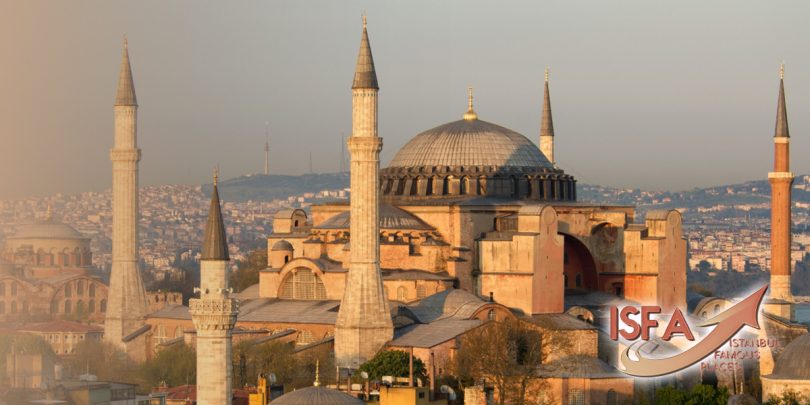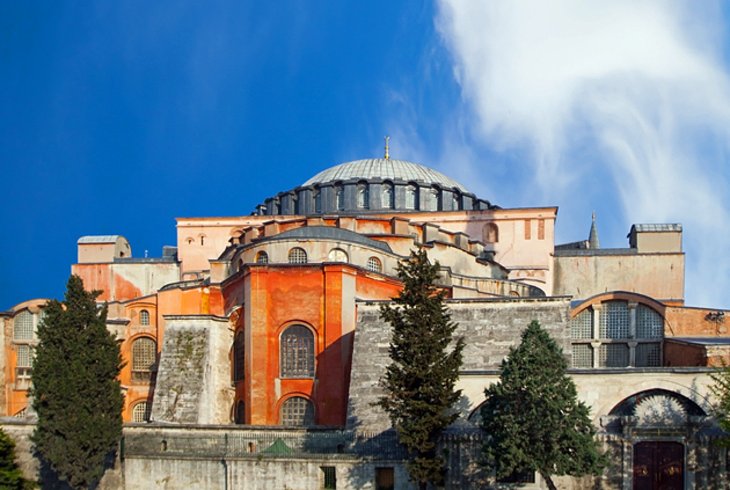
Whenever we hear the name Istanbul, the first thing that comes to mind is the Grand Hagia Sophia. The domes, the 15,000-year-old structure, its mosaics, the site itself, and its complex history can intrigue one to dig deeper into this ancient spectacle.
The architectural marvel, the Grand Hagia Sophia Mosque, is one of the biggest tourist attractions in the world. Included on the UNESCO World Heritage Site, Hagia Sophia is also a contested site for the two most widely practiced religions across the globe, Christianity and Islam.
Let’s take a quick peek at how Hagia Sophia came to be:
When was the Hagia Sophia built?
Hagia Sophia underwent many transformations. What you see today is the third version of the Hagia Sophia, built in 537 A.D. by the orders of Emperor Justinian I. At that time, it served as the main cathedral with the bishop’s seat. And people at the time used to call it the “Great Church.”
The riots of 404 led to the destruction of the first structure of the “Great Church.” And in 415, it was rebuilt. But again during the Nika revolt of 532, the monument got heavily destroyed due to the fire. Emperor Justinian I, considering it a symbol and a significant place of the city, ordered to rebuild the masterpiece.
When Mehmed II conquered the city of Constantinople, now Istanbul, he made sure not to destroy the city’s natural beauty and decided to save Hagia Sophia from damage. Mehmed II, during his reign, got the Great Church converted into a mosque, which today we call Hagia Sophia or Ayasophia in Turkey.
He also ordered the modification of several original mosaics and artworks in the building. The status of this place remained as a mosque until the early 20th century, after which it served as a museum.
Atatürk turned Hagia Sophia into a museum:
After the great Turkish War of Independence, modern Turkey founder Gazi Mustafa Kemal Atatürk ordered the conversion of Hagia Sophia into a museum in 1934. The newly formed Turkish government restored the artworks changed during Mehmed II’s era after it secularized the building.
But the status of Hagia Sophia came to the agenda in Turkey again. The current government promised to change Hagia Sophia into a mosque once again.
The monument returned to its former glory of the Grand Hagia Sophia Mosque on July 24, 2020, with a presidential decree.
Turkish President Recep Tayyip Erdogan joined hundreds of worshipers for the first Muslim prayer in 86 years inside Hagia Sophia after its conversion.
Today, Hagia Sophia is a UNESCO heritage site, included in 1985.
Breath-taking features of Hagia Sophia Mosque
The grand magnificent dome:
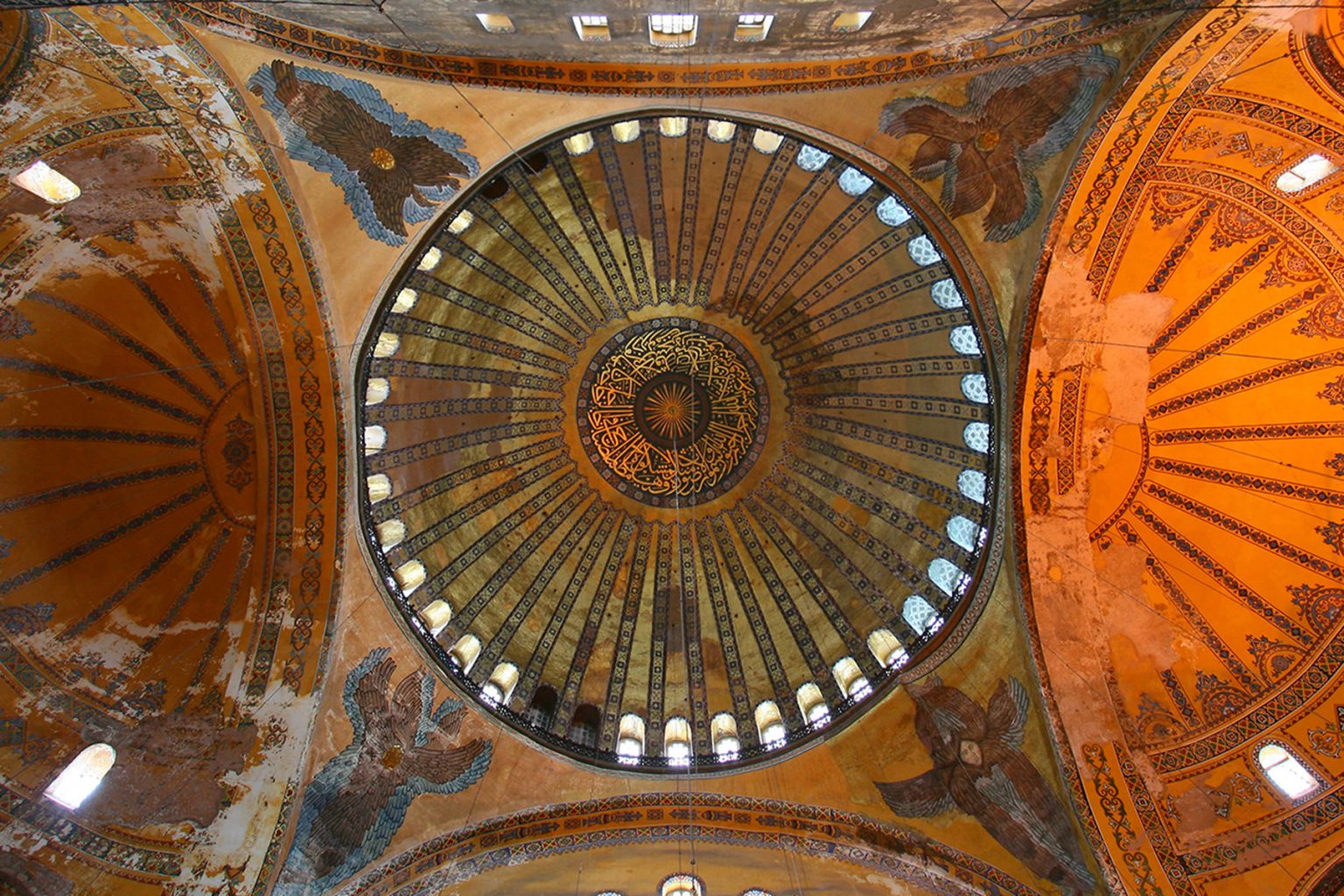
The first and foremost thing that will catch your eye is the grand dome at the center. The circular dome, supported by four pendentives and 32 meters in diameter, on top of a square building is as beautiful from the inside as the outside.
A seraph, an angelic being from traditional Christian angelology, embellishes these four pendentives. You can also see some smaller domes that extend to the western and eastern ends and give the structure its distinct form.
Spectacular mosaics with spiritual drawings:
You can see mosaics everywhere at Hagia Sophia. In the east direction, there are mosaics true to the Christian religion.
On the ground level, you will see artwork on the walls and other places depicting Islam. Here you will also witness the mihrab, a spectacular structure made of marble that also indicates the direction to Mecca, and the minbar, a place for giving sermons.
It is worth mentioning that the construction of Hagia Sophia was in such a way that it faces the East, which is where Mecca lies.
Mecca holds great significance in Islam, as here is where Prophet Muhammad was born and the religion itself.
Shapes and sizes of mosaics vary throughout the building, and many seem incomplete as well. These carvings depicting the Byzantine era are mesmerizing, each giving a deep meaning sacred to the religion and the time of its creation.
Different mosaics adorning the walls of Hagia Sophia:
Out of all the different mosaics, the Virgin Mary Mosaic adorning the main exit doorway is astonishing. It depicts Virgin Mary at the center, with Constantine the Great standing to her right and Justinian to her left. While Constantine is seen offering the virgin Constantinople to Mary, Justinian offers Hagia Sophia to her.
There is also an Omphalion at Hagia Sophia, kept uncovered while replacing the status of the previous church into a mosque.
This Omphalion is a square section of inlaid mosaic flooring and holds significance. It was where the Byzantine emperor’s throne rested and crowing ceremonies took place. This floor mosaic is a brilliant piece of art.
You will see mosaics on all surfaces except for marble walls. These mosaics are made of gold, silver, glass, terracotta, and other colored stone varieties.
The VI Leon mosaic is also one of the artworks at Hagia Sophia that catches the eye of historians from across the globe.
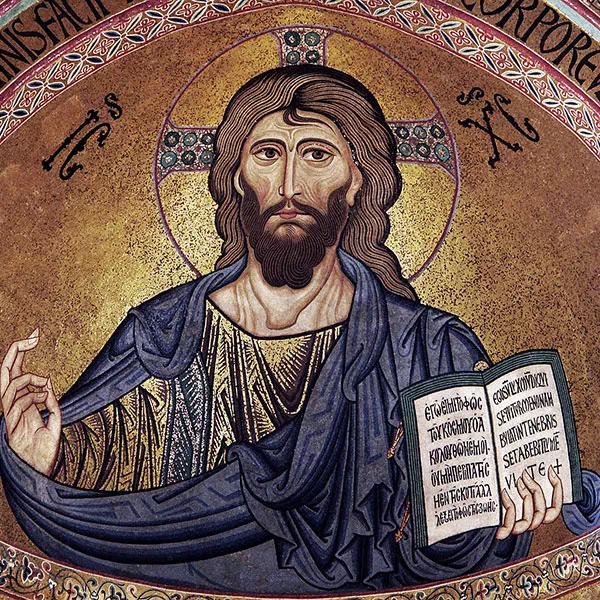
Pantaktrator Jesus rests on the Emperor’s Gate in the middle of the mosaic. Jesus is sitting on a throne with a backrest. He holds an open Bible in his left hand, with an inscription in greek that reads, “Peace is with you. I am the Nur of the World.”
There are two medallions, right and left to Jesus. On the right is Archangel Gabriel, and on the left is Mary.
The pillar of Marry’s Tears or the weeping column:
There lies a column inside Hagia Sophia, covered with bronze plates. There is a hole in it, and if you put your thumb inside and rotate your hand in full circle, whatever you wish will come true. This is how it got the name “wishing column.”
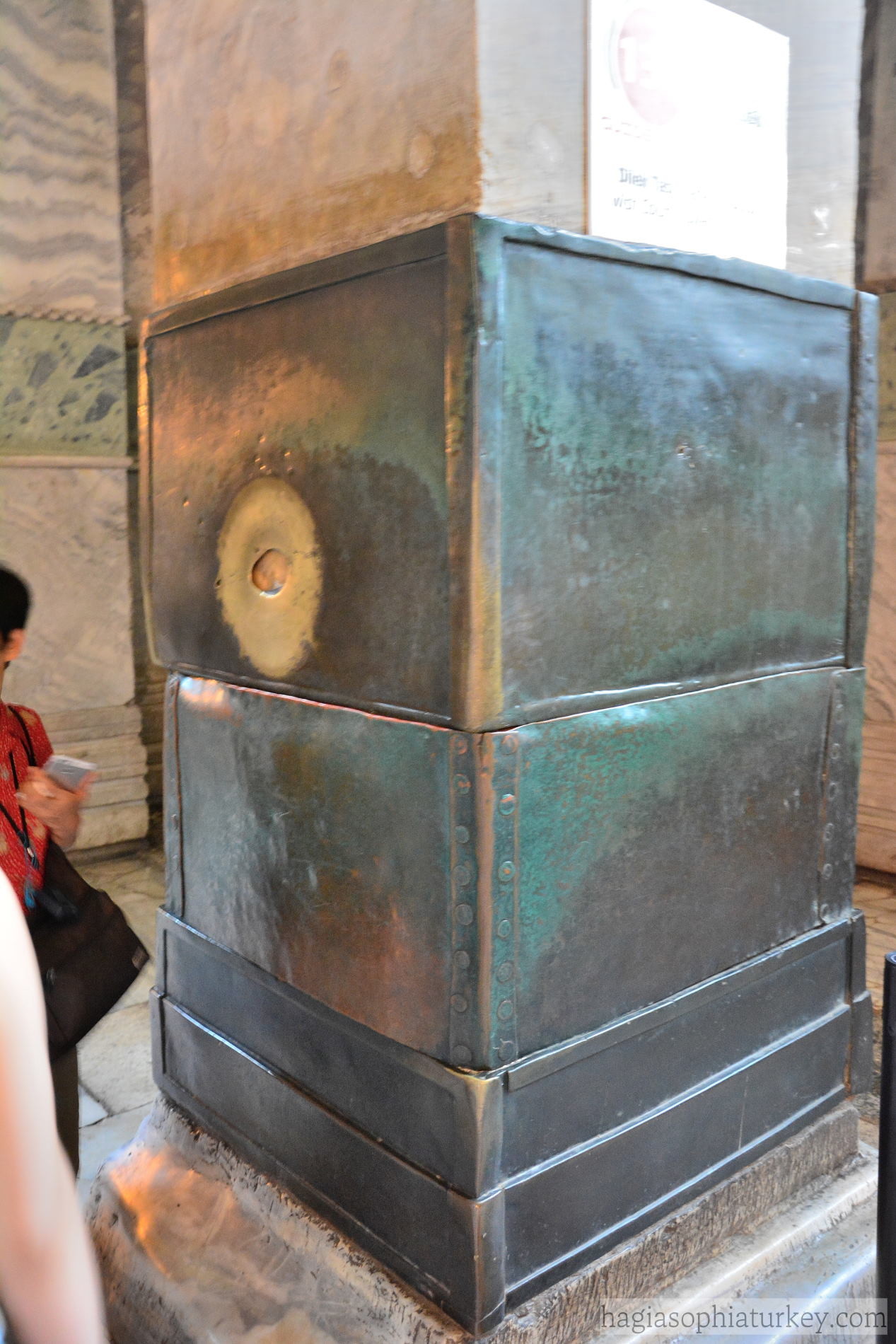
According to the legend, one day, Justinian once had a severe headache as he roamed inside Hagia Sophia. He rested his head on this pillar, and his headache disappeared at that very moment. Water has been seeping from the column ever since that day.
It says that when Justinian had a headache, Marry relieved his pain, and her tears flowed. So as per another legend, it is the tears of Marry that roll down the column and makes it wet. That is how the column got the name “the weeping column.”
The mystery of the Talisman gates:
There are 350 doors in Hagia Sophia, and 101 are Talisman gates. As per the myth, whenever someone counts these talisman gates, the number increases by one each time. There is some mystery revolving around it that nobody could crack. Believe it or not, Hagia Sophia is a magical place.
Beautiful Ottoman Tombs:
Tombs of five sultans lie in the Hagia Sophia complex just outside the main exit and beside the original baptistry. Turkey is famous for Iznik tile work, and these tombs have marvelous interiors made of Iznike tiles.
Tales and Legends associated with Hagia Sophia
The story of ‘healing well’:
According to one legend, there is a “healing well” in the center of the Hagia Sophia. Some believe that drinking the well’s water can heal heart diseases.
As per the ritual, the one who is ill drinks water from the “healing well” on empty stomach after reciting prayers. People say that the practice miraculously helped them heal their diseases.
However, the practice lost its importance with time, but you can still visit the well.
The priest who vanished with holy grail:
According to another legend, a priest disappeared with a holy grail at Hagia Sophia. A priest who preached in Hagia Sophia before the conquest of Constantinople didn’t want Muslims to touch the holy grail.
He ran through one of the doors in Hagia Sophia and disappeared. Th legend goes that Muslims who saw the pastor running followed him and saw the door turn into a wall.
It is said that if Istanbul is won by the Christian world again, the priest will resume preaching from the place he is staying.
Devil imprisoned in Hagia Sophia:
Soon after the conquest of Constantinople, Fatih the Conqueror ordered the conversion of Hagia Sophia into a mosque. He put Akşemsettin in charge.
But when worshippers tried to pray, they could not as a demon in Hagia Sophia was against the conversion. It gave anxiety and stress to those who wanted to pray inside Hagia Sophia.
When Akşemsettin understood what was going on, he prostrated and prayed himself. God listened to his prayer and locked the demon in a stone that still is in Hagia Sophia.
If Jesus returns, he will first set foot on Hagia Sophia:
Some believe that there is a secret section in Hagia Sophia where the cross on which Jesus was crucified and the nails used on the cross are kept hidden.
Furthermore, The legend says that Jesus ascended to the sky after his crucifixion and will return to the world again. If Jesus returns, Hagia Sophia is the place where he will first set his foot.
The date of the apocalypse:
As one enters the door in the south direction of the building, you will see a column with the date of the apocalypse written on it. Furthermore, as per the legend, Hz. Hızır wrote this date that denotes the doomsday: “Sunday, year 1038.”
Things to keep in mind while visiting the Grand Hagia Sophia Mosque:
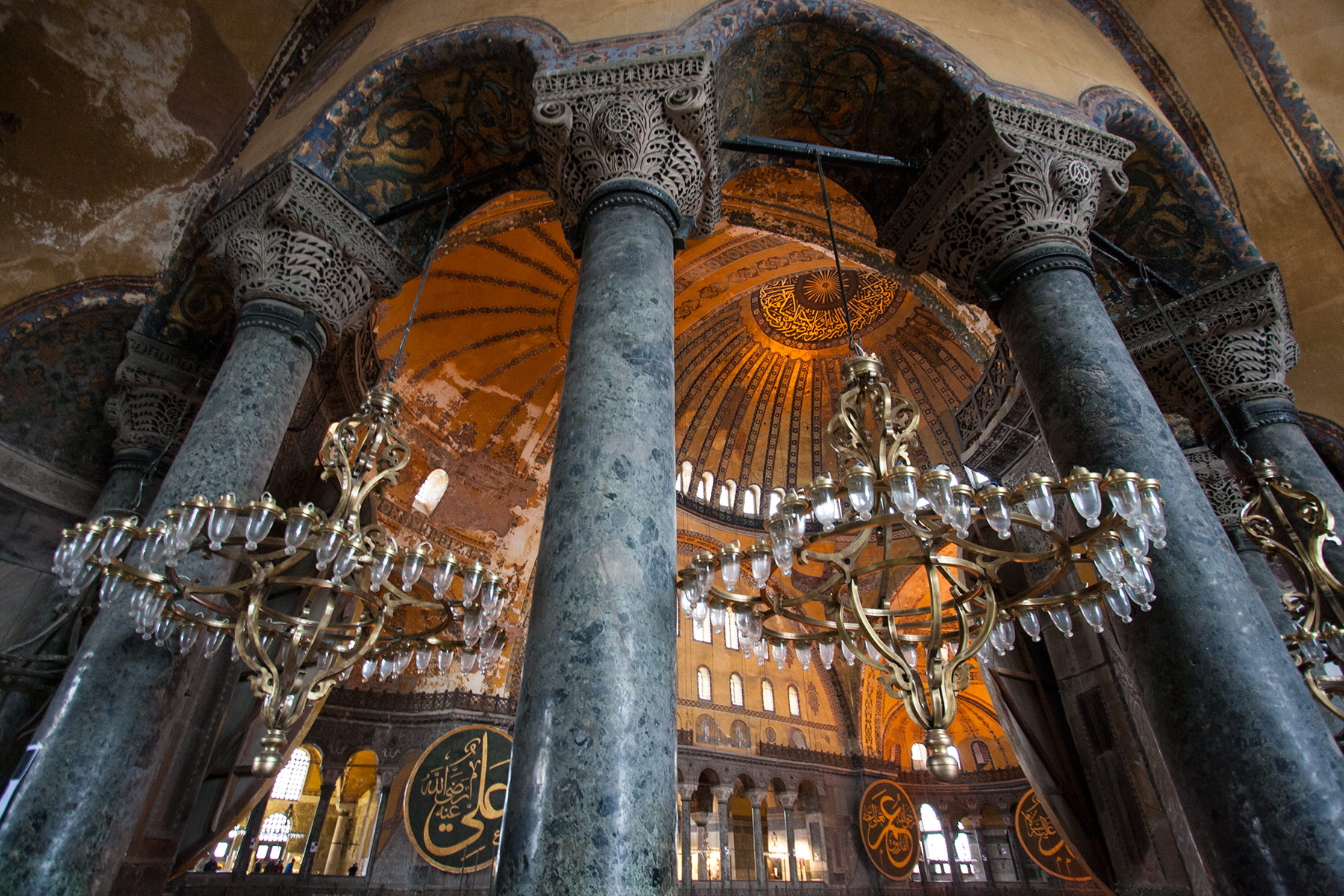
Located in Istanbul’s Sultan Ahmet neighborhood in Fatih, the Grand Hagia Sophia Mosque should be on your bucket list. As the place is no more a museum, there is religious etiquette to follow while visiting the mosque.
The foremost thing is to dress modestly. Moreover, decent dressing is a mark of respect and as you’ll be visiting a mosque, it is highly advisable that you dress modestly. Whether you are a male or a female, avoid wearing shorts and also too revealing clothes.
However, women will also need to cover their heads before entering the mosque. They can find these headscarves at the entrance, which are free. You will need to return them at the exit.
Visitors also need to take off their shoes before entering the mosque. There are racks where you can leave your shoes at just the entrance of the main hall.
As people who come here also pray, please avoid standing in front of someone kneeling in prayer. Also keep phones silent and avoid talking loudly; it might disturb the ones who are praying.
As Hagia Sophia is now a religious place, there is no fee for visiting this magnificent place.

